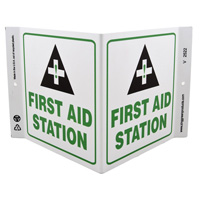| The Home page of ILPI's Safety Data Sheet (SDS) Resource, the leader in SDS information since 1995! | |
| The history and philosophy behind this resource. | |
| A curated collection of books and reference materials concerning Safety Data Sheets and closely related topics. | |
| Paste your plain text SDS into the SDS-Demystifier, and it will be converted into a hypertext-enriched document with links to detailed explanations of each key term. | |
| An extensive list of frequently asked questions about Safety Data Sheets including regulations, content, compliance, and more. | |
| A humorous take on Safety Data Sheet jargon. Fill in the blanks on our entry form to generate a personalized Unsafety Data Sheet to share with your coworkers. | |
| Since 1995, we've maintained this massive curated list of the best places to find Safety Data Sheets on the Internet. | |
| You are here! Way more than a glossary, this hypertext-enhanced resource covers hundreds of SDS-related terms and expert knowledge. Each entry includes both the SDS relevance and links to additional authoritative resources. | |
| Archived results of Safety Data Sheet related polls taken by some of our millions of site visitors | |
| The OSHA regulations behind SDS regulations, including the inspection guidelines and over 400 official interpretations letters under the Hazard Communication Standard | |
| Commercial suppliers of SDS authoring and management software as well as cloud compliance services. | |
| Commercial companies that will create SDS's for your specific needs as well as SDS translation companies. |

Safety signs, banners, and scoreboards? Get yours at Safety Emporium!

We have all kinds of safety wall signs at Safety Emporium.
Definition
Alopecia is the loss of hair.
There are many possible causes for alopecia, including natural aging, hormonal imbalance, autoimmune disorders, exposure to chemotherapeutic agents used in cancer treatment, as well as occupational exposure to certain other chemicals.
Additional Info
Proving a connection between shedding or hair or hair thinning and occupational exposure to certain chemicals is a difficult task at best (see Further Reading below for a case report and rebuttal). Kenerva's Occupational Dermatology has a chapter titled Chemically Induced Hair Loss/Alopecia (pp 1035-1042) that discusses hair loss in detail including types of hair loss (e.g., anagen, medications precipitating telogen), chemicals causing hair loss (e.g., antimitotic agents, phenyl glycidyl ether), medications causing hair loss of unknown type (e.g., antithyroid drugs), medications possibly associated with hair loss, as well as chemically induced cosmetic alopecia, and typical scenarios in alleged occupational hair loss
.
Books Available
NOTE: We may collect a share of sales or other compensation from the links in the following list:
- "The Difficult Hair Loss Patient: Guide to Successful Management of Alopecia and Related Conditions", Paperback, 2015, 344 pages. Estimated price $139.99. Info and/or order.
- "Hair Loss Solutions: The Ultimate Guide To Restoring Your Hairline", Paperback, 87 pages, 2019. Estimated price $15.00. Info and/or order.
- "Alopecia & Wellness: How I got my hair back treatment free", Paperback, 138 pages, 2015. Estimated price $14.99. Info and/or order.
- "Alopecia Areata - A Medical Dictionary, Bibliography, and Annotated Research Guide to Internet References, 2nd Ed", Paperback, 172 pages, 2009. Estimated price $28.95. Info and/or order.
SDS Relevance
Alopecia will generally occur on a Safety Data Sheet in section Section 11 (toxicological information) as a symptom, effect, or risk of exposure to the material.
Acute or chronic exposure to some chemicals may result in the temporary or permanent loss of hair. For example, a symptom of thallium (a heavy metal) poisoning is loss of hair. Hair loss is also a symptom of excessive radiation exposure and can also result from the use of chemotherapy (anticancer) drugs.
Of course, alopecia also has many other causes, including heredity, normal aging, and auto-immune disorders. See the links below for further information.
Further Reading

Get your US-manufactured NIOSH-approved N95 surgical respirators and more from Safety Emporium.
- Questions and Answers About Alopecia Areata at the NIH's National Institute of Arthritis and Musculoskeletal and Skin Diseases (NIAMS).
- The NIH's What Is Alopecia Areata?.
- Visit the National Alopecia Areata Foundation.
- Alopecia Areata at WebMD.
- Alopecia at the Merck Manual Profesional Version.
- Alopecia Areata at DermNet NZ.
- Association of reversible alopecia with occupational topical exposure to common borax-containing solutions in J. Am. Acad. Dermatol. 2001 Apr 44(4) 449-602. But see the next link for a contrary viewpoint.
- Occupational alopecia or alopecia areata? in J Am Acad Dermatol 2002, 47(4), 636-637, a rebuttal to the conclusions of the reference above this one.
- Development of Lichen Planopilaris-Like Alopecia following Occupational Exposure to Trichloroethylene and Tetrachloroethylene in Skin Appendage Disord 2019, 5(6), 374-378.
See also: Heavy metal.